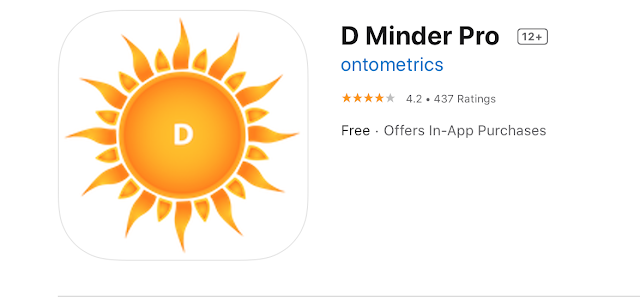An Apple a Day Keeps the Doctor Away — Fact or Fiction?
You likely know the familiar expression, “An apple a day keeps the doctor away.”
The phrase was based on a Pembrokeshire proverb that originated in 1866.
“Eat an apple on going to bed, and you’ll keep the doctor from earning his bread.”
So while it might not ALWAYS keep the doctor away fresh apples are a great snack to enjoy during and after our healthy living competition.
Do you want to hear something shocking? For many years I taught a scripture course early in the morning before high school students went on to their public school classes. We often played games and in a rendition of scripture scavenger hunt the kids were always enthusiastically scouring back packs, looking under desks and running to other classrooms in search of an item I had indicated would be rewarded. Nearly every time we played I would have “a piece of fruit” as one of the items they were to grab. And do you know what was shocking? Despite the fact that nearly all of the students had their packed lunches in their back packs they had brought to class, my own children were the only ones that ever had a piece of fresh fruit packed for lunch.
So just a reminder. While fruit sauce packets, fruit strips, juice boxes, fruit chips etc. etc. might be tasty- none of these provides the health benefits of whole fresh fruit.
So——I am sooooooo excited it is apple season. I admit I am super apple picky, And while I LOVE a fresh crispy apple I do not enjoy apples that were picked 11 months ago and have been kept in cold storage. So NOW is the time to go and grab some fresh, seasonal (and if possible local) apples.
A couple of years ago we did a family apple taste test. I bought and sliced several varieties of apples and we tasted them all and discovered our very favorite are ENVY apples. They are sweet and tart and super crunchy and they don’t turn brown after cutting— so the perfect sliced lunchbox treat. Yum. What are you favorites? I also love Honey Crisp and Pink lady.
Adding apples to your diet can help improve several aspects of your health.
Apples have been associated with a number of benefits that could help promote long-term health.
Highly nutritious
Apples are loaded with important nutrients, including fiber, vitamins, minerals, and antioxidants:
One medium apple provides the following nutrients
- Calories: 95
- Carbs: 25 grams
- Fiber: 4.5 grams
- Vitamin C: 9% of the Daily Value (DV)
- Copper: 5% of the DV
- Potassium: 4% of the DV
- Vitamin K: 3% of the DV
Apples are also a great source of antioxidants like quercetin, caffeic acid, and epicatechin
Supports heart health
Studies show that eating more apples could be associated with a lower risk of several chronic conditions, including heart disease
In fact, one study in over 20,000 adults found that consuming higher amounts of white-fleshed fruits and vegetables, including apples, was linked to a lower risk of stroke
This may be due to the presence of flavonoids found in apples, which are compounds that have been shown to reduce inflammation and protect heart health.
Apples are also loaded with soluble fiber, which may help reduce blood pressure and cholesterol levels, both of which are risk factors for heart disease.
Contains cancer-fighting compounds
Apples contain several compounds that may help prevent cancer formation, including antioxidants and flavonoids.
According to one review of 41 studies, consuming a higher amount of apples was associated with a decreased risk of developing lung cancer.
Another study observed similar findings, reporting that eating more apples was tied to a lower risk of colorectal cancer .
Other research suggests that a diet rich in fruits and vegetables could protect against cancer of the stomach, colon, lungs, oral cavity, and esophagus.
Other health benefits
Apples have also been linked to several other health benefits that could help keep the doctor away:
- Support weight loss. Due to their fiber content, apples have been shown to promote feelings of fullness, decrease calorie intake, and increase weight loss
- Improve bone health. Human, animal, and test-tube studies have found that eating a higher amount of fruit could be associated with increased bone mineral density and a lower risk of osteoporosis.
- Promote brain function. Animal studies suggest that eating apples could help reduce oxidative stress, prevent mental decline, and slow signs of aging
- Protect against asthma. Studies show that an increased intake of apples may be linked to a lower risk of asthma
- Reduce the risk of diabetes. According to one large review, eating one apple per day was tied to a 28% lower risk of developing type 2 diabetes, compared with not eating any apples at all
Here is one of my all time favorite recipes for this time of year
SANDEE’S APPLE WALDORF SALAD (I think it serves 2 but my husband thinks that is way too much apple)
2 large apples sliced and chopped (with skin)
1 large rib of celery chopped
1/2 cup low fat vanilla greek yogurt
1 ounce chopped walnuts
So ladies you guessed it. Our bonus challenge this week is to eat one apple per day for our daily 5 bonus points. As always if this challenge doesn’t work for you contact me for an alternate challenge (407-227-2733)






-.350.jpg)







